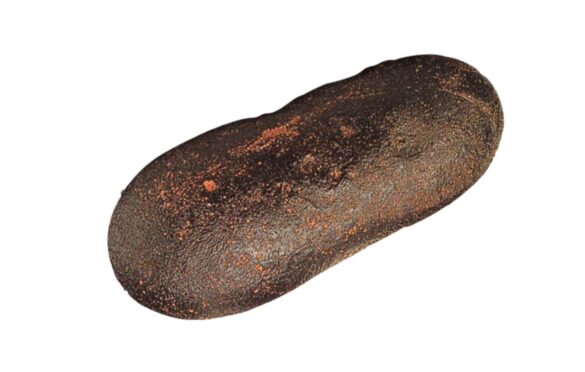Tektite – A Mysterious Glassy Rock from Outer Space

Tektites are fascinating rocks that have intrigued geologists and scientists for centuries. These mysterious glassy rocks are believed to have formed from the impact of a meteorite or asteroid on the Earth’s surface. In this article, we will explore the texture, structure, and formation of tektites in detail.
Texture of Tektites
Tektites are generally dark in color, ranging from black to brown and green. They have a smooth and glossy surface and are usually spherical or teardrop-shaped. Tektites are relatively lightweight, with a density that is lower than most rocks on Earth. This low density is due to the fact that they contain a high percentage of silica, which is a key component of glass.
Structure of Tektites
The structure of tektites is unique and different from most rocks found on Earth. They lack any crystal structure and are amorphous, which means that they do not have a defined shape or structure. The lack of a crystal structure is due to the rapid cooling of the molten material during their formation.
Tektites are classified into different groups based on their shape and composition. The most common types of tektites include:
Australites: These tektites are found in Australia and Southeast Asia and are usually black or dark brown in color.
Indochinites: These tektites are found in Southeast Asia and are usually dark green or black in color.
Moldavites: These tektites are found in Europe, particularly in the Czech Republic, and are usually green in color.
Formation of Tektites
The formation of tektites is still a matter of debate among scientists. However, it is widely believed that tektites are formed when a meteorite or asteroid impacts the Earth’s surface at high velocity. The impact generates immense heat and pressure, which melts the surrounding rocks and ejects molten material into the air. This material then cools rapidly as it falls back to Earth, forming tektites.
One of the key features of tektites is their composition. Tektites have a unique chemical composition that is similar to that of the Earth’s crust, but with some notable differences. For example, tektites have a much lower content of volatile elements such as water and carbon dioxide, which suggests that they were formed from molten material that was vaporized during the impact.
Conclusion
In conclusion, tektites are fascinating rocks that offer valuable insights into the formation and evolution of our planet. These glassy rocks are believed to have formed from the impact of meteorites or asteroids on the Earth’s surface, and their unique texture and structure make them a subject of interest for geologists and scientists. By studying tektites, we can learn more about the processes that have shaped our planet over millions of years.
